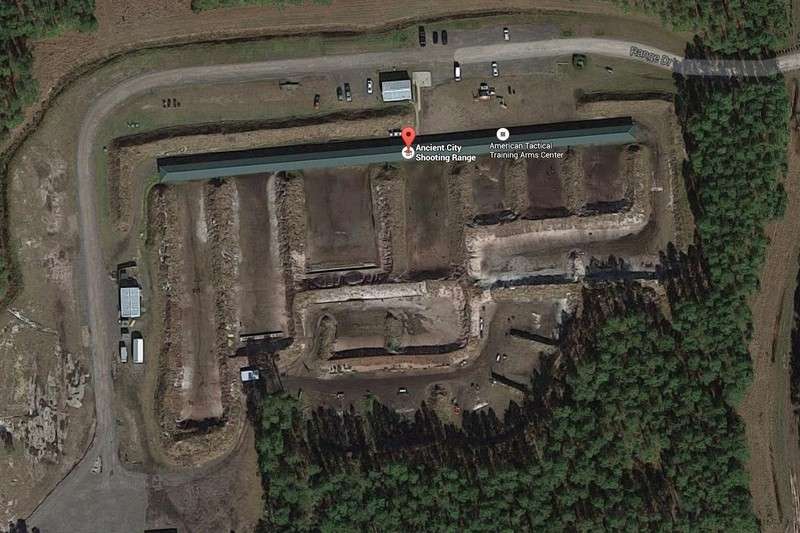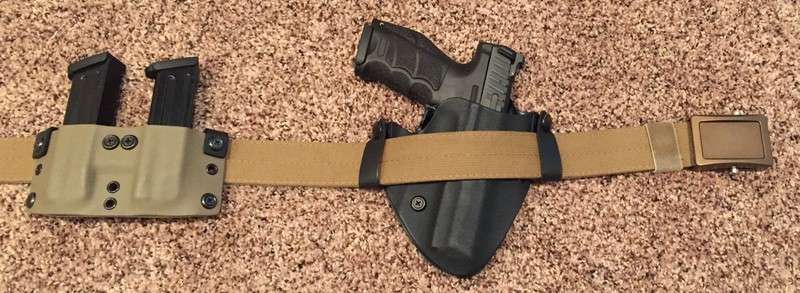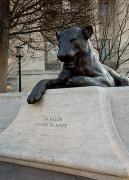CTT Solutions
Covert Carry
19-20 September 2015
Ancient City Shooting Range, St. Augustine, FL
Instructor: Mike Pannone
Instructor to Student Ratio: 1:20
Ammunition Requirement: 1,000 rounds
Actual Rounds Fired: 877
Tuition: $525
Introduction & Training Background
This was the first Mike Pannone class I have attended. My previous training history includes Randy Cain’s Tactical Handgun 101 (taken twice) and Intermediate Handgun (taken three times), as well as SouthNarc’s Extreme Close Quarters Concepts. Since 2011, my handgun sustainment training has consisted of shooting 5,000-10,000 rounds a year, hitting the range at least two to three times each month. Dry fire is sporadic.
Location
The course was held at the Ancient City Shooting Range in St. Augustine. The range facilities were good, consisting of multiple pistol and rifle bays, a substantial covered area, and bathrooms with running water. The range was conveniently located ten minutes away from a variety of hotels and restaurants.
Gear
As this was a class purpose-built around concealed carry, I shot my daily carry gun, an HK VP9. The only modification done was to replace the stock luminous sights with a set of Heinie Ledge night sights. Prior to attending class, this particular gun had 2,335 rounds fired. Magazines were stock HKs with a fifteen round capacity. Ammunition was Blazer Brass 115gr, which is what I typically shoot in classes, as it has proven to be reliable over the course of several thousand rounds fired during the past few years.
Support gear was exactly what I use for daily carry—a JM Custom Kydex IWB Version 1 holster and double magazine pouch supported by an Ares Gear Aegis Enhanced belt. Oakley M-Frame 2.0s with Prizm lens were worn for eye protection, while hearing protection was provided by a combination of SureFire Sonic Defender plugs and MSA Sordin Supreme Pro-X muffs.
Course Description
From the Alias Training website: “The CTT-Solutions covert pistol program is designed to exercise and refine the skills necessary to access and effectively use a concealed handgun with a high level of speed and efficiency day or night. This course is based upon training I received at 1st SFOD-D, provided to the Federal Air Marshal Service while I was the head range instructor at the FAMS school, the chief in-service instructor at the Seattle Field office of the FAMS, taught and used during protection operations in Iraq and refined for a course recently taught to high level SOF assets prior to high threat deployment. Students will be required to use the same gun and holster throughout the entire course. Time will be allotted in the first day to identify the best type, location and wear of holster and associated equipment. The remainder of the course will be dedicated to making the use of the weapon from that configuration rapid, sure and effective. Although courses of fire will go out as far as 50m, the bulk will be multiple partially obscured targets with multiple shots per target at 03-15m.
The course is designed to safely make you an extremely competent legal concealed handgun carrier (civilian, military or law enforcement) and give a foundation of drills and concepts for you to maintain your skills at your own range. Tactics will revolve around awareness and avoidance with shooting always being the last resort.”
Day 1
Weather: Low 73°, high 86°, intermittent rain throughout the morning
Class began with a quick explanation of Mike’s background and the reason the course was developed. While the term “concealed carry” generally denotes simply throwing a cover garment over one’s gun, the theory behind covert carry is that there may be serious ramifications (legal or otherwise) if one is observed to be carrying a firearm. Brief discussion was given to tactics with regard to being forced into a use of force situation, with the idea that one should first avoid bad places and bad situations, evade an attacker if unable to avoid those places/situations, and defend as a last resort. Or, to put it another way, don’t go to stupid places with stupid people and do stupid things. The traditional mindset briefing was not given, because Mike doesn’t believe they are effective.
The first portion of live fire was done with weapons worn openly, as Mike wanted to observe each student’s draw before complicating things by adding cover garments. A series of basic drills were run using B-8 targets at approximately seven yards, including one shot draws, slide-lock reloads, and tactical reloads. After Mike was comfortable with everyone’s fundamentals, cover garments were donned, and we began another series of basic drills after receiving detailed instruction on clearing a cover garment both for strong-side hip carry and appendix carry.
After lunch we shifted from shooting B-8 bulls to using IPSC targets, with a goal of getting mostly A-zone hits. Acceptable sight picture was demonstrated—at seven yards, if the front sight is visible anywhere within the rear sight, an A-zone hit is guaranteed if the trigger is controlled properly.
Later in the afternoon we switched to steel targets, and began working on what Mike calls “rabbit and coyote” drills. Rather than use a shot timer to measure performance, as it would drastically slow down progress with a class of this size, Mike likes to have shooters pair up and run a series of action/reaction drills, in which both students assume the same body and hand position, and one shooter initiates by drawing and firing, while the second shooter must react to his partner and attempt to draw and fire just as quickly. In addition to allowing the entire class to shoot at the same time, this has the benefit of introducing some healthy competition between shooters, as there tends to be more motivation to beat your partner than to beat an arbitrary time. (I should point out that Mike is not anti-shot timer, it was simply the size of the class that would have made it inefficient to use.)
Because there was a variety of sizes of steel targets, the class lined up and began moving laterally across the range, drawing and firing every time a target presented itself. This drill was then repeated moving in the opposite direction, then again engaging two targets with each draw.
Day 2
Weather: Low 71°, high 88°, partly cloudy
Day two began by warming up with freestyle and strong hand only draws on a B-8 at ten yards, followed by slide lock reloads. We quickly moved on to shooting IPSC targets, again with the goal of making mostly A-zone shots. After some multiple target drills on steel, we spent a while doing shooting on the move drills with IPSC targets. A significant amount of time was spent on dry repetitions of a support hand only draw. During his time as a FAMS instructor, Mike developed a method of drawing with the support hand that differs from some of the more well-known methods like reversing the gun in the holster or pinning the gun between the knees. I won’t give away specifics here—you should take this class!—but suffice it to say that Mike’s technique works quite well and allows for positive control of the gun without sacrificing mobility or situational awareness, and can be performed on the move if necessary.
After lunch, we did more rabbit/coyote drills, this time adding slide-lock reloads and multiple target transitions to the mix. We lined up again and did several more runs of moving laterally across the range while drawing and engaging each steel target, incorporating reloads, then a combination of freestyle, strong hand only, and support hand only draws. We moved back to approximately forty yards and began engaging steel at distance. Finally, we finished up with a course of fire that Mike highly recommends if one only has fifty rounds (or limited time) to work with. This routine consists of ten freestyle draws, then ten strong hand draws, then ten support hand draws, then ten freestyle draws with a slide-lock reload.
Takeaways
• Mike is a big proponent of squaring the hips to the target, as body alignment alone will allow for sufficiently accurate hits at seven yards and in. Moving the lead foot just one inch off target can shift natural point of aim enough to move a shot’s point of impact by as much as three yards left or right at a distance of seven yards. A bladed stance will force one’s muscles to fight each other to maintain point of aim. A square stance allows the abs and spine to lock down for a more stable, less fatiguing shooting platform.
• Shift weight instead of changing foot position. For example, if standing in the normal modified isosceles stance with the strong side foot slightly behind the support side foot, if one must draw strong hand only, rather than stepping forward with the strong side foot, save time by simply dropping the strong side knee, allowing the hips to rotate and square to the target.
• Don’t be afraid to look at the holster when re-holstering. Mike believes that in this regard, appendix carry is actually safer than strong-side carry, as one is more likely to look at an AIWB holster because it is in front of him. For strong side carry, rather than using the muzzle of the pistol to find the holster, Mike advocates flagging the strong hand thumb and using it to locate the holster, which helps keep the muzzle averted from the torso and legs.
• Tape targets frequently. Mike also recommends using tape that is the same color as the target whenever possible, as different colored tape is visually distracting.
• When shooting on the move, the gun will naturally move in a sideways figure-eight pattern. Do not attempt to force the gun back on target—this will lead to overcorrection when the gun naturally moves in the opposite direction. Take shorter steps to prevent the body from falling forward and radically dipping the muzzle. Bend slightly at the knees, but don’t unnecessarily exaggerate a crouch—it’s unnatural and not how the body normally deals with uneven terrain.
• Use video analysis to critique performance. What feels good may not actually be good, or fast.
• The draw and the trigger press are mutually exclusive events. Fight the natural urge to slow down the draw when at longer distances.
• The trigger press is the only part of the draw stroke that cannot be rushed—seek to improve speed in other areas, such as clearing the cover garment, getting the gun on target, and acquiring a sight picture.
• Use the slide release to run the slide during reloads. It is not a fine motor skill, and is measurably faster than “power-stroking” the gun.
• For malfunction clearances, don’t power-stroke the slide. It’s inefficient and requires more movement than the slingshot method, as due to square-range conditioning, most shooters will rotate their entire upper body in the direction of their strong hand in order to keep the muzzle pointed downrange. There is no need to rotate the gun so the ejection port is facing down when clearing a stoppage.
• Use proprioception and kinesiology to your advantage. Rather than develop techniques that one only uses when shooting, strive to adapt everyday movements to support your shooting mechanics, such as slingshotting the slide (the same way one would grasp and pull a rope) or indexing a spare magazine (with the index finger pointing naturally toward the magazine well).
Conclusion
Overall, this was an outstanding course. I was relatively happy with my performance, at least in terms of mechanics. Mike’s goal for the course is to give students a massive number of repetitions of drawing the gun from concealment—he states that on average there is a draw for every 1.5 rounds fired, which jives with the large number of single shot drills performed. We estimate we performed at least 300 draws each day. By the end of day two, the majority of us were drawing much more efficiently, with significantly fewer fumbled draws or reloads. I did notice a marked drop-off in my own accuracy by the end of the second day, as I was fighting mental fatigue and dehydration (as was most of the class, I suspect).
What I most appreciated was Mike’s highly analytical nature, and propensity to challenge the status quo when it comes to shooting-related concepts that “brief well, but don’t actually work,” as he repeated often throughout the class.
I experienced no weapons- or gear-related problems during the class. The VP9 I shot in this course worked flawlessly, despite being abused with mags that were liberally coated in dirt and mud thanks to a large amount of standing water on the range on day one. The Heinie sights performed acceptably, though being all-black, they can be difficult to acquire with speed. I will most likely be replacing those with Trijicon HD sights, as they are much easier to acquire and track with the high visibility front sight. I do find that for long range work I prefer a narrower front than the HDs provide, so I’ll also be experimenting with fiber optic sights on another VP9.
I only identified a couple of areas for improvement with how the course was run. First, no medical brief was conducted. Second, the instructor to student ratio was unfavorable. This is something that has been noted with past courses organized by Alias Training, and seems to continue to be the norm. While Mike did a great job of constantly moving up and down the line, and he was always available to answer questions, with that many students and no AI present there is obviously a limit to how much individual feedback each shooter could receive. Third, there were no student introductions. One doesn’t need to know everyone’s life story, but it is nice to have an idea of who you’re shooting with.
Despite those few cons, I would absolutely recommend this course to anyone who carries a concealed weapon. Your performance will improve. Prior to attending my average draw from concealment to first shot time at seven yards on a six inch target was 2.00 to 2.20 seconds, but a month after class I’m firmly in the 1.70 to 1.80 range at ten yards, and I’ve managed to set a new personal best of a 1.48 second first shot (though I’m not yet able to sustain that kind of speed and accuracy consistently). I will definitely be seeking out Mike for further training in the future.






 Reply With Quote
Reply With Quote



